But on the last night of our warmer-each-day stay, I heard their distinct call - for my very first time.
"Is that them?" I asked biologist-bud Craig.
He barely needed to poke his head out the door. "Yep."
After the loan of a flashlight, and an excellent primer on directions and catching styles, I stalked off into the very dark night.
Down the road, through a gate, across a pasture and under a fence - all the time hearing their buzz-saw snores getting louder and louder...
Arriving at the pond, I poked along the bank - searching for the gleams of their golden eyes.
The common western toads seemed to have them outnumbered.
Bufo, Bufo... Spea! But too far from shore.
Any worry of mission failure was quickly quieted when I came across another - this one perfectly positioned and staring straight at me: the alien spotlight.
"Look into the light my little friend..." Snatch.
Spea hammondii - the Western Spadefoot Toad - still trilling like a tribble:
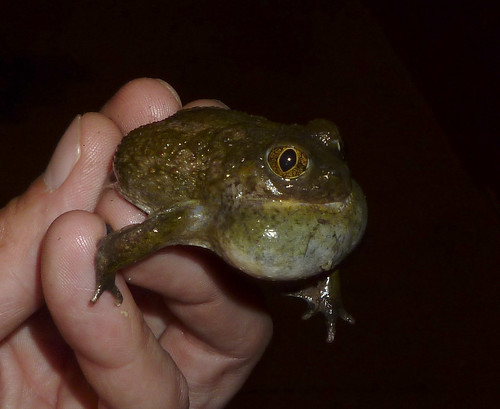
After a quick photo, I popped him into a bag, alien abducted a 2nd, and took them back to the ranch house for a full photo session and some paparazzi-style oooohs and aaaaahs.
They were well received. The little guys even performed for us - snoring while in-hand.
Check out those vertical pupils! And the smoother-than-usual skin for a toad:
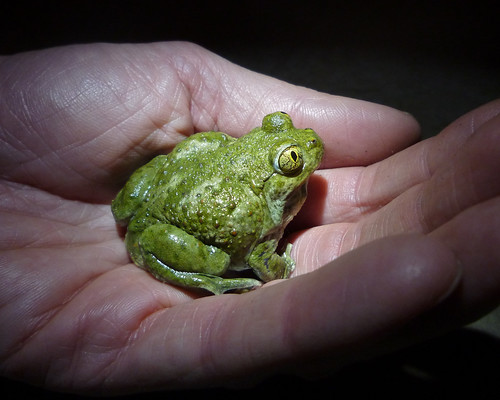
They're called Spadefoots because they - you guessed it - have a spade on each foot:
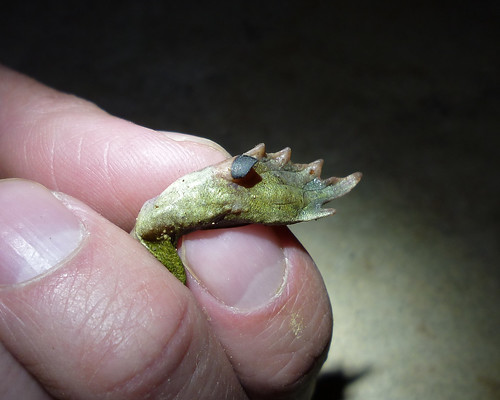
The interesting bit is what they use it for, and that's digging. Spea have adapted to living near water sources that dry up, such as vernal pools, seasonal ponds & wetlands. When the water dries, the toads move off and bury themselves in safe ground using those spades. They then go dormant and wait for the next rainy season. In fact, even when "active" they hide underground by day, so it's easiest to find 'em at night.
Unfortunately, development across the Central Valley has hit these endemic darlings hard. About 80% of the lands where they've lived are now under the plow - or houses. So the California Department of Fish & Game considers Spea hammondii a Species of Special Concern. And they keep track of where they're living and how well they're doing on the ranch. And so far, so good.
Taking photos was hilarious - I'd let them go and have about 2 seconds before a hop. :)
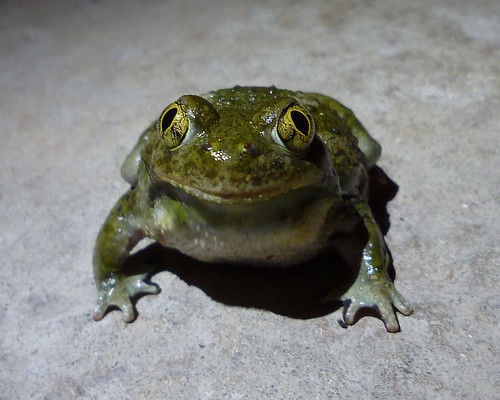
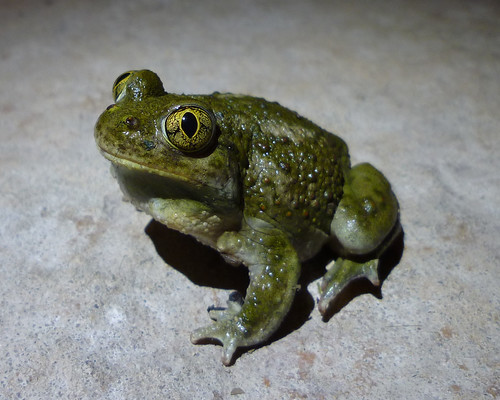
After 10 minutes of fun I took the charmers back to the pond. As we got near, they heard the calls of their friends and started up their own saws again. Snickering, I plopped them into their spots and paused to record the whole gang's fair song (with a few tree frogs and toads for chorus):
To cap off an engaging evening, I almost stepped on a nest of too-cute baby killdeer by the pond:
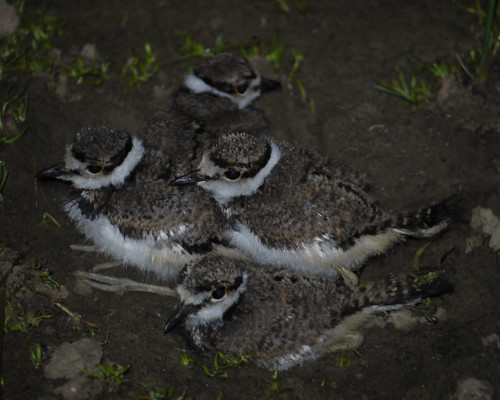
Then got bark-growl-yelped at by a 100-foot-away coyote out spooking the horses in the pasture.
Ah - Chimineas.
Hope the yote didn't get after those killdeer. Silly spot for a bed. Unless you like snoring.
====
References:
- Robert C. Stebbins (Peterson Field Guides) - Western Reptiles and Amphibians
- CaliforniaHerps.com - Spea hammondii - Western Spadefoot
- Wikipedia - Spea hammondii
- California Department of Fish & Game - Species of Special Concern
- The Nature of a Man (this blog) - Flower Faces of Chimineas
- The Nature of a Man (this blog) - Primavera-Painted Chimineas
- The Nature of a Man (this blog) - The Chimineas Ranch
==========

That is just the coolest little toad I think I've ever seen! What a great adaptation (the spade)! Gorgeous creature, and I thoroughly enjoyed coming along on the journey-a tale well told.
ReplyDeleteWhat a fun post, illustrated by great images. The addition of a sound track was a nice touch!
ReplyDeleteWhat a great post!
ReplyDeleteI always thought gumbi (sp??) toads (anurans) would make great kids' toys. Chewable non-toxic and collectible like baseball cards. Teach you toddler toad calls! Spea would be a fav.
ReplyDelete